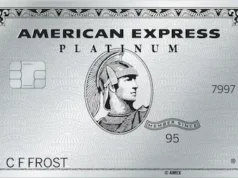For entrepreneurs, freelancers, and small-business owners, having the right financial tools can make all the difference. One of the most valuable is a business credit card — a versatile instrument that helps manage expenses, separate finances, and build business credit.
But how exactly do you qualify, apply, and get approved for one? In this guide, we’ll explain step-by-step how to get business credit cards, what lenders look for, and how to choose the best option for your company’s needs.
1. What Is a Business Credit Card?
A business credit card functions similarly to a personal card but is designed for company expenses. It allows you to make purchases, earn rewards, and build credit under your business’s name.
The main difference is that the card is tied to your company’s financial profile instead of (or in addition to) your personal one. This distinction is crucial for managing taxes, tracking spending, and building a professional financial reputation.
2. Why Get a Business Credit Card?
Business credit cards offer a range of benefits that go far beyond convenience. Here are some of the most important reasons to consider one:
- Separate Business and Personal Expenses: Simplify bookkeeping and avoid mixing personal purchases with company transactions.
- Earn Rewards and Cashback: Many business cards offer travel points, cashback, or discounts on business-related spending like office supplies and advertising.
- Build Business Credit: A strong business credit history can help you secure better financing options in the future.
- Manage Cash Flow: Access to a revolving line of credit allows you to handle short-term expenses or emergencies.
- Employee Cards: Issue additional cards for employees with customizable spending limits.
For growing businesses, a credit card isn’t just a payment method — it’s a strategic tool.
3. Step 1: Check Your Business Eligibility
Before applying, you’ll need to make sure your business qualifies. Fortunately, you don’t need to run a large company to be eligible — even freelancers, online sellers, and side-hustle owners can apply.
Requirements Typically Include:
- Business Name and Structure: LLC, corporation, partnership, or sole proprietorship.
- Employer Identification Number (EIN): This is like a Social Security number for your business.
- Business Address and Industry Type: Helps lenders understand your operational context.
- Revenue and Expenses: Card issuers may ask for estimates to determine your credit limit.
If you’re self-employed, you can still use your legal name as the business name and your Social Security number instead of an EIN.
4. Step 2: Review Your Personal Credit
Even though business cards are tied to your company, most issuers check the owner’s personal credit score — especially for new or small businesses without established credit history.
Here’s why it matters:
- Good Credit (700+): Increases your chances of approval and unlocks better rewards and lower interest rates.
- Fair Credit (640–699): You may still qualify, but possibly with lower limits or higher APR.
- Poor Credit: Consider secured business credit cards or work on improving your credit score first.
To prepare, check your credit report for errors, pay down existing debts, and avoid new loan applications before applying.
5. Step 3: Choose the Right Type of Business Credit Card
Not all business credit cards are created equal. Depending on your company’s needs, you may prefer rewards, low interest, or flexible payment terms.
Common Types Include:
- Rewards Cards: Earn points or miles for travel and purchases.
- Cashback Cards: Get a percentage of your spending back, ideal for routine expenses.
- Low-Interest or 0% APR Cards: Great for startups looking to manage early expenses without high interest.
- Secured Business Cards: Designed for those with limited or poor credit; requires a refundable deposit.
- Corporate Cards: For larger organizations with established financials.
Compare annual fees, APR rates, bonus categories, and rewards programs carefully before making your choice.
6. Step 4: Gather the Required Documents
When you’re ready to apply, make sure you have all the necessary documentation. Lenders use this information to verify your identity, income, and business legitimacy.
Commonly Requested Documents:
- Employer Identification Number (EIN) or Social Security Number
- Business license or registration
- Proof of income or business revenue
- Business address and contact information
- Tax identification details
Having these ready speeds up the approval process and improves your chances of success.
7. Step 5: Apply Online or Through Your Bank
The easiest way to get started is by applying online. Most major banks and financial institutions, including American Express, Chase, Capital One, and Bank of America, allow digital applications that take only a few minutes.
Be honest when entering your business details — accuracy matters. Once submitted, you’ll typically receive an instant decision or a follow-up request for more information.
If approved, your card will arrive within 7–10 business days, and you can begin using it immediately after activation.
8. Step 6: Use Your Business Credit Card Responsibly
Getting approved is only the first step — managing the card wisely is what builds long-term success.
Best Practices:
- Pay Your Balance in Full: Avoid interest charges and maintain a strong credit profile.
- Track Spending: Use your card’s dashboard to monitor expenses by category.
- Keep Utilization Low: Stay below 30% of your credit limit to maintain good standing.
- Review Statements Regularly: Identify unnecessary charges and employee misuse.
- Leverage Rewards: Redeem points for travel, cashback, or business purchases to maximize value.
Responsible usage not only helps your business grow but also strengthens your reputation with lenders.
9. Step 7: Build Your Business Credit Score
Once you start using your card, your payment history is reported to business credit bureaus like Dun & Bradstreet, Experian Business, and Equifax Business.
Timely payments, low balances, and consistent activity all contribute to a positive credit score, which will eventually help you qualify for larger lines of credit, business loans, or equipment financing.
10. Common Mistakes to Avoid
Even experienced entrepreneurs can fall into traps when managing credit. Avoid these common pitfalls:
- Mixing personal and business spending
- Applying for too many cards at once
- Ignoring annual fees and interest rates
- Missing payments or paying late
- Overlooking terms and reward expiration dates
A disciplined approach ensures that your credit card becomes a business asset — not a liability.
11. Final Thoughts: Building Financial Strength with Business Credit
Learning how to get business credit cards is more than an administrative step; it’s an investment in your company’s financial future. A business credit card provides flexibility, organization, and growth potential — all key ingredients for long-term success.
Start with a clear understanding of your business goals, maintain transparency in your application, and choose a card that aligns with your spending habits. Once approved, use it wisely to unlock rewards, improve cash flow, and strengthen your creditworthiness.
With discipline and strategy, your business credit card can become one of your most powerful tools — helping you grow, invest, and succeed with confidence.








